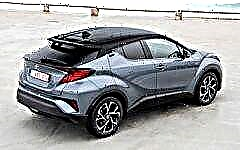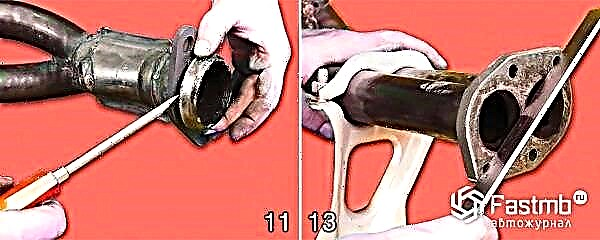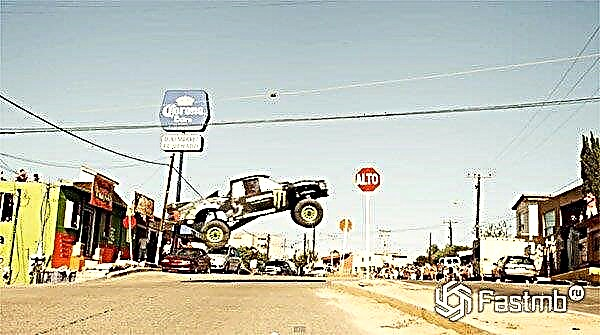

The content of the article:
- Why you can't transport animals just like that
- Types of fixation and rules for safe travel
- Features of transportation of dogs
- We transport cats
- Other animals
Every owner of a furry pet at least once had to take it somewhere. This could be the first meeting and the way to a new home, an appointment with the veterinarian or the way to the country. Such travels are far from always safe for animals, because many people do not even know the basic rules of transportation. Neglecting them can end very sadly.
There is no official law regulating the transportation of animals. No matter how rude it may sound, our beloved pets are considered just a "load" in the car. Following the foregoing, the only mandatory rules: baggage must not block the driver's visibility and cannot interfere with driving.
By law, everything is so, but after all, every owner who loves his Vaska or Sharik will try to provide them with maximum safety on the way. Fortunately, there are now enough funds for this.
Why you can't transport animals just like that

Perhaps, in every settlement with the onset of spring, you can see crowds of summer residents on suburban roads. Tomato seedlings, a bunch of junk, a bull terrier's muzzle sticking out of the window, or a cat with bulging eyes, stunned from the road, galloping on the back shelf. Sound familiar?
Let's imagine what will happen in the event of an accident, even at low speed. People wearing seat belts will stay in place and get off with minor abrasions. And your beloved pet, with sharp braking, will fly through the entire interior of the car and, with tremendous acceleration, collide with a torpedo or glass, and, possibly, completely throw it onto the track. There is no need to talk about the consequences of such incidents.
According to the results of crash tests, at the moment of a collision, any body in the car increases its mass several times. So, a twenty-kilogram dog can weigh up to half a ton. The flight of such a "projectile" through the cabin is deadly both for the dog itself and for everyone in its path.
Even if we exclude the possibility of accidents, animals left to themselves cause a lot of problems for the driver.
Dogs jump on the seat back, get in the way and distract from the road. Cats generally have a superpowered ability to be in the wrong place. The most dangerous situation is when they get hammered under the pedals and do not allow their carcass to squeeze the brake.
For many animals, traveling in a car is a big shock. Cats are more susceptible to it than dogs. Movement and sounds panic some tailed beasts. In this state, they can behave absolutely inadequately - jumping around the cabin, scratching and biting, ruining the seat upholstery. A feeling of fear can provoke the poor fellow to cope with natural needs, and it will be difficult to withdraw the consequences of such an emergency.
Another unpleasant fact is that the vestibular apparatus of animals is less adapted to travel in a car. Pets can vomit directly on the seats and upholstery.
Types of fixation and rules for safe travel

There are different options for transporting animals. Each owner can choose how to maintain the health of his pet. Let's take a look at the basic tips:
- You need to accustom your pets to everything from birth. Correct positioning in the car is no exception. The sooner you instill in the animal the norms of behavior in the vehicle, the fewer problems will arise in the future;
- Keep pets free in the car, even when driving short distances. An accident can happen at any time;
- The best place to transport animals is in the trunk of a hatchback, station wagon or SUV;
- In order for the pet not to climb into the cabin, you need to make a special fence in the luggage space. It can be in the form of a lattice or a grid. The main condition is the reliability and strength of such a structure. Some new cars are equipped with a similar facility from the factory;
- Large dogs are equipped with a living space in the luggage compartment, fastened with special seat belts or put in special hammocks;
- It is recommended to transport smaller animals in containers. Carrying bags come in different sizes, and you need to select them based on the size of your pet. Inside, there must be enough free space for movement and ventilation holes for air circulation;
- If the trunk is busy, then the container with the pet is placed on the floor and fixed in a stationary state with the back of the seat. Placing the carrier on the car couch is extremely dangerous for both the animal and you - if you brake hard, it will turn into a cannon shell with tremendous destructive force. Although some containers are equipped with anchorages for seat belts, you should not trust such a fixation. The plastic of the bag may not withstand the pressure at the time of the collision, crack and injure the pet;
- Special harnesses with seat belts can also protect against damage. They look like vests, tightly encircling the body of an animal, and are fastened to ordinary car belts or buckle. It is important that they are made of durable material, do not cause discomfort to the animal, and that the fastening carabiners can withstand a heavy load;
- For the cleanliness and safety of the seats, lay a special rug or cover under the pet;
- If the animal is afraid of travel and does not tolerate the road, give it some soothing drops before leaving.
Features of transportation of dogs

The attitude of dogs to the car is most often formed from the first experience of moving. Therefore, in order to save yourself and your pet from problems and fears, be attentive to the Barbosa's acquaintance with the car.
- Allow your dog to inspect the vehicle calmly before driving for the first time. Start the engine later, let it get used to the new sound. Show her the "place" and fasten the seat belts.
- The dog will feel better in the trunk - there is more space and you can equip everything for its convenience. To prevent the animal from interfering with the driver, do not forget to install protective nets or grilles.
- It is also possible to transport in a container or on a special harness, fastened with belts. In the latter case, the length of the straps should be as short as possible and should not allow the dog to move freely around the cabin.
- Do not overfeed the animal before riding, as this may cause nausea and vomiting.
- Be sure to stock up on water. Even if the journey is short, the stress of the road can make your pet feel thirsty. Also, to reduce your dog's anxiety, bring his favorite treat with you.
- Animals do not tolerate heat and stuffiness. Therefore, ventilate the car before putting the tailed passenger in there.
- Never let your dog lean out of the window. Even children know this is dangerous. A stone from the road, debris or a large insect can fly. This can be fatal at high speed. In addition, the strong air flow will cause diseases of the ears and eyes of the pet.
- On long trips, do not let the animal go off-leash in unfamiliar terrain - the dog may run away and get lost.
- If you are planning a long trip, prepare all the documents of the dog, go through a veterinarian examination, get vaccinated. When traveling abroad, find out what certificates are needed to transport a pet. Be prepared that each state has its own laws and not all countries can take an animal.
- Train your dog to jump into the car only at your command. There are frequent cases when dogs who love travel leave in other people's cars or buses and get lost in an unfamiliar area.
Features of transportation of cats

Mustached Murki rarely enjoy tourism. More often they try with all their might to escape from the car and loudly send out feline curses to the creators of this terrible tarantass. If your cat is not like that, then you are very lucky.
- Most cats intuitively sense the upcoming torment and hide in advance in the farthest and darkest corners. If it is not a problem to find them in the apartment, then in the village the search can be very delayed. Therefore, place the animal in a closed room in advance and do not release it before the trip.
- Just like dogs, cats should not be overfed. It's best to take food and water with you to reduce panic attacks along the way.
- Do not allow the cat to be free in the salon! A frightened animal is unpredictable. It can scratch and bite, tear the seats with its claws, rush around the car, try to climb on the driver's head or dive into his feet, under the pedals. All this is insanely dangerous and can lead to serious consequences.
- In addition, cats instantly react to any opportunity to get out of the car. They will be the first to notice an opening door or gap in a window, sufficient for an escape. Jumping out into the wild, the frightened pet will rush off wherever the eyes look. This is how many favorites get lost.
- Harnesses and vests are ineffective for cats. They are able to keep the animal, but they cannot protect the salon from the clawed marauder.
- The ideal way to transport a cat is a container. This is the only way to avoid the above problems. It is better to put it in the trunk or on the floor behind the front seats.
- Cats do not tolerate long-distance movement, so you shouldn't take them with you unnecessarily.
- When planning to cross the border, find out the necessary requirements for transporting animals, go through the procedures with the veterinarian and take your documents with you.
Features of transportation of other animals

Least problems arise when rodents and other small animals travel. A special cage or box will be enough here. The only condition is to observe the temperature regime, do not allow pets to overheat or hypothermia.
Ferrets are transported according to the same rules as cats.
Parrots and other decorative birds should not be transported in their own cages. A sharp change in the environment of your home can negatively affect the bird's well-being. Better to put them in another closed cage or dark box. Watch the air temperature very carefully - hypothermia for parrots can be fatal.
For the transport of livestock, the rules are formed by the veterinary services. But there are basic safety points:
- Animals are divided into categories, it is not allowed to drive everyone into one car (for example, large and small livestock);
- The presence of feeders and bedding is required;
- Large animals must be tied;
- There should be enough space in the body so that all "passengers" could be in a lying position;
- Rabbits and poultry are transported in large wooden crates.
Furry friends bring so much joy and love. Often people consider them to be members of their families and are afraid of losing. Responsibility for the "tailed" lives is completely in the hands of those who tamed them. And even if there is no official law on the transport of animals, every loving owner will definitely ensure the safety of his pet.











